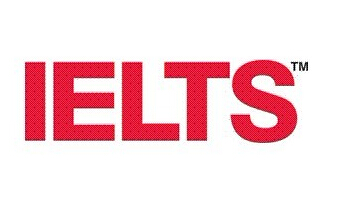托福阅读材料之人死后假肢怎么办?
2014-03-27 17:09 供稿单位: 新航道
出国英语考试有哪些 雅思6.5是什么水平 雅思阅读评分标准 托福阅读评分标准 雅思和托福的区别
Millions of prosthetics, breast implants, and pacemakers now exist – so what happens to all these augmentations when their owners die or no longer need them? Frank Swain investigates.
当今社会假肢、隆胸和心脏起搏器的使用屡见不鲜。而当这些假体的使用者死去或者不再需要它们时,它们会面临怎样的命运呢?弗兰克?斯温(Frank Swain)对此进行了调查。
The first patient to be fitted with a pioneering artificial heart in France has died
世界首例人工心脏移植手术曾在法国成功完成,患者如今已经去世。
Under the watchful eye of the prison guards at Metro Davidson County Detention Facility, half a dozen inmates in blue overalls are wrestling with prosthetic legs. They strip each one down into a collection of screws, bolts, connectors, feet and other components. The prison workshop is home to a collaboration with Standing With Hope, a US charity based in Nashville, Tennessee that recycles unwanted prosthetic limbs for the developing world. The disassembled legs will be shipped to Ghana, where locally trained clinicians will rebuild them to fit patients there.
在戴维森郡拘留所(Metro Davidson County Detention Facility)狱警的监督下,6名身穿蓝色工作服的犯人正在忙碌地处理着那些假肢。他们要把每条假肢的螺钉、螺栓、连接器、脚和其他零件都拆分开来。这个监狱车间是由监狱与美国一家慈善机构“与希望同立”(Standing With Hope)合作建立的,该机构总部位于田纳西州首府纳什维尔(Nashville),专门回收多余的假肢,然后稍往发展中国家。被拆卸的假肢将被运到加纳(Ghana),在那里,接收过培训的本地医生会重新组装这些部件,做成适合病人的假肢。
These legs will get a second life, but other types of prosthetics and implants usually face a different destiny. What to do with augmented human parts when they are no longer needed – often due to the owner’s death – is an increasingly common issue. Modern medicine offers a litany of replacement parts, from whole limbs to metal hips, shoulders and joints. Then there are pacemakers and internal cardiac defibrillators (ICDs), as well as more common augmentations like dentures and silicone breast implants. What happens to these augmentations when someone dies?
这些假肢将得到“二次生命”,但是其他类型的假肢或植入物通常面临着不同的命运。怎样处理人体这些不再需要(通常是由于主人死亡)的多余部分,已经成为了一个日益普遍的问题。现代医学提供了一连串的替换零件,从整个肢体到金属臀部、肩膀以及关节等等。日常使用的增加物还包括心脏起搏器,内部心脏除颤器(ICDs)以及更为常见的假牙和硅胶乳房植入物等。当这些增加物的使用者死去后,它们的命运会如何呢?
Inert devices such as breast implants and replacement hips tend not to be removed after death, largely because there’s no compelling reason to do so, and they pose little threat to the environment. So it’s likely that the archaeologists of future centuries will uncover peculiar objects in the graves of the millennial dead: silicone bags, plastic teeth and sculpted metal bones.
在人死后,乳房植入物,臀部替换物等惰性设备一般不会被移出体外,很大原因在于没有硬性要求一定要移除这些增加物,而且它们对环境不会造成太大威胁。所以很有可能未来的考古学家会在几千年前的坟墓里面有独特的发现:硅胶袋、假牙和雕刻过的金属骨骼。
It’s a different story for cremation. In a furnace, silicone may burn up, but not the metal in implants – such as titanium or cobalt alloy. It is often separated from the ash and disposed of separately. Even tiny amounts of precious metals such as gold fillings can be discovered by waving a metal-detector over the ashes.
而火葬的话,情况则大不相同。在炉灶中,硅胶可能会被烧掉,但植入物中的金属如钛或钴合金却不会。通常这些金属会从灰烬中分离出来,单独处理。用金属探测仪在灰烬堆上方扫扫,即使是微量的贵重金属,比如金制品原料,也能被探测到。
In recent years, enterprising organisations have stepped in to recycle this material. Dutch company Orthometals, for example, collects 250 tonnes of metal every year from hundreds of crematoriums around Europe. At their facility in Steenbergen, it is sorted and melted down into ingots before being sold to the automobile and aeronautical industries. A similar US company, Implant Recycling, sells the melted and recast metals back into the medical industry. After you die, a little piece of you may one day end up in an aeroplane, a wind turbine, or even another person.
近年来,一些企业已经开始回收这种材料。比如,荷兰Orthometals公司每年从欧洲各地的数百个火葬场回收250吨金属。然后运往位于Steenbergen的基地,在那里融化分解这些金属,然后卖给汽车和航空公司。美国也有一家类似的植入物回收公司(Implant Recycling),融化重塑金属后,重新卖给医药行业。在你死后,你身上的某个部分可能有会用于飞机,风力涡轮机,甚至出现在另外一个人身上。
Pacemakers and ICDs, by contrast, are often taken out of the body after death – and almost always before cremation, because the batteries can explode when heated. The same goes for spinal cord stimulators that treat pain and some types of internal pumps for administering drugs, since they contain electronics too.
相反,人死后,心脏起搏器和内部心脏除颤器都会被移出体外,而且几乎都是在火葬前,因为这些仪器内部的电池在加热时可能会爆炸。这同样适用于治疗疼痛的脊髓刺激器和某些类型的用来施用药物的内部泵,这些仪器也都含有电池。
Once removed, implants are typically discarded – both the European Union and the US, among others, have rules that forbid the reuse of implanted medical devices. However, there is a growing trend to recover them for use in the developing world.
这些植入物一旦被移出体外,基本上都会被丢弃-欧盟和美国都规定禁止再利用这些被植入过的医疗器械。然而在发展中国家,再利用这些使用过的医疗器械的趋势在日益增长。
At $4,000 for a pacemaker and $20,000 for an ICD, a second-hand implant is the only way that millions of people will be able to afford this life-saving equipment. In the UK, charity Pace4Life collects functioning pacemakers from funeral parlours for use in India. In a similar effort, the journal Annals of Internal Medicine recently published the results of a US programme called Project My Heart Your Heart, which found that 75 patients who received second-hand ICDs showed no evidence of infection or malfunction. The group are now applying for FDA approval to send recycled heart devices overseas.
一个心脏起搏器可以卖4000美元,一个内部心脏除颤器2万美元,因此二手植入物是许多人能够负担得起的救生设备。英国一家慈善机构Pace4Life从殡仪馆回收功能正常的心脏起搏器,供印度人民使用。同样,内科医学年鉴杂志(Annals of Internal Medicine)最近发表了美国某项目“心心相印”(My heart Your Heart)的研究结果,该研究表明,75名使用二手的内部心脏除颤器的患者并没有出现感染或功能失常的症状。该研究小组目前正在申请食品药物管理局(FDA)批准将这些回收的心脏装置运往海外。
Back in Nashville, Standing With Hope has adopted a similar approach by shipping prosthetic limbs to Ghana. The charity’s co-founder, Gracie Rosenberger, was badly injured in a traffic accident at 17, an incident which cost her both legs. Like many amputees, Gracie acquired a stockpile of prosthetics over the years, which made her wonder whether they could be put to better use. As limbs are replaced or outgrown, the old ones gather dust in the backs of closets. When an amputee passes away, the family are often left with a cache of working limbs but no one to take them.
在纳什维尔,“与希望同立”慈善机构也是采取了类似的方法,将假肢运往加纳。格雷西?罗森伯格(Gracie Rosenberger)是该慈善机构的联合创始人,她17岁时在一次交通事故中严重受伤,并失去了双腿。和许多截肢者一样,这么多年来格雷西储存了许多假肢。于是她就想是否可以更好地利用这些假肢。旧的假肢被替换下来后就被放在柜橱后面,沾满灰尘。截肢者去世后,家里往往会剩下许多还能用的假肢,但没人会去用它们。
“The private insurers do not want it back, I don’t even think Medicare wants it back,” explains Rosenberger’s husband Peter, who is president of Standing With Hope. “There are all kinds of liabilities. So a lot of this stuff is discarded, unfortunately.”
罗森伯格的丈夫彼得(Peter)是该慈善机构的董事长,他解释道:“私人保险公司不想收回这些假肢,甚至是医疗机构也不想这样做。这些机构负债太多,很多这种东西都不得不丢弃。”
Now amputees and their families can send old limbs in the mail to the Rosenbergers. When asking for donations, Standing With Hope’s website reads: “We’re not asking for an arm and a leg... just a leg”.
现在截肢者和他们的家人可以把不用的假肢邮寄给罗森伯格所在的这家机构。该慈善机构在请求捐赠时,就在网上写到:“我们的要求并不多,只是一条你不再需要了的义腿而已。”
The goal is to beat last year’s total of 500 replacement limbs delivered to Ghana. “Last year I had a thing I called Operation Footloose, and on my radio show I would play the theme from Footloose and say ‘turn that foot loose so we can recycle it’,” Peter laughs.
我们的目标是超过去年运送到加纳的500个假肢。“去年,我有个计划,我取名为‘浑身是劲’计划,我总是在我的广播节目里演奏《浑身是劲》(Footloose)的主题曲,然后唱到‘让我们浑身是劲地拆开假肢,把你循环利用吧’”,彼得笑道。
Just like organ donors, those that bequeath their medical implants can bid farewell to the world with the knowledge they offer a stranger a second chance at life, be it a man with a heart defect in India, a woman undergoing a hip replacement in America, or a child with a missing limb in Ghana. And it’s not just donors and recipients that have something to gain from the process. The Metro Davidson County Detention Facility is just a few minutes’ drive from Peter’s home, and every so often he visits the inmates working in the limb disassembly workshop. As they chatted, one prisoner told Peter what the Standing With Hope project meant to him. “He had tears in his eyes and said to me: ‘I get to do something positive for the first time with my hands. I’ve never done anything positive with my hands’,” Peter recalls. “How rewarding is that?”
那些捐赠医疗植入物的人和器官捐赠者一样,可以在告别世界的同时,给一个陌生人带来第二次生命,可能是一名有心脏缺陷的印度男子,可能是一位进行髋关节置换的美国女人,也可能是一个截肢的加纳孩子。在这个过程中,不仅仅是捐赠者和受赠者有所收获。开车从戴维森郡拘留所到彼得家只需要几分钟,因此他经常去看望在肢体拆卸车间工作的犯人们。他们聊天的时候,一名犯人告诉彼得,“与希望同立”慈善机构对自己意义重大。“他热泪盈眶地对我说,‘我次用自己的双手做了些有意义的事情。我之前从来没有做过任何有意义的事’ ”,彼得回忆道,“这多么值得啊!”
以上就是新航道托福频道为大家整理的托福阅读材料之人死后假肢怎么办?,希望对大家有帮助,更多资讯、资料请访问新航道托福阅读频道 https://www.xhd.cn/toefl/yuedu/
- 上一篇:托福阅读:巧过生词关
- 下一篇:托福阅读材料之人脑可以分辨出“假笑”?
分享到:

- 新航道,英语成功之道。时间获取新航道英语学习资料和新鲜资讯,请在微信公众账号中搜索「新航道英语」或者「xhdenglish」,或用手机扫描左方二维码,即可获得新航道每日精华内容推送和英语学习经验分享,并参与新航道举办的各项活动。
责编:李术
精彩专题
更多视频荟萃
更多
-
120托福节之李老师:你的托福阅读领路人!
时长:01-18

-
120托福节之冉维:你的托福写作领路人!
时长:01-18
托福预测
更多
-
2017年托福听力考情分析及2018年备考建议
2017 年全年的48 场新托福考试已经落下帷...
- 2017年托福口语考情分析及2018年备考建议
- 2017年托福阅读考情分析及2018年备考建议
- 2017年托福写作考情分析及2018年备考建议(下)
- 2017年托福写作考情分析及2018年备考建议(上)









